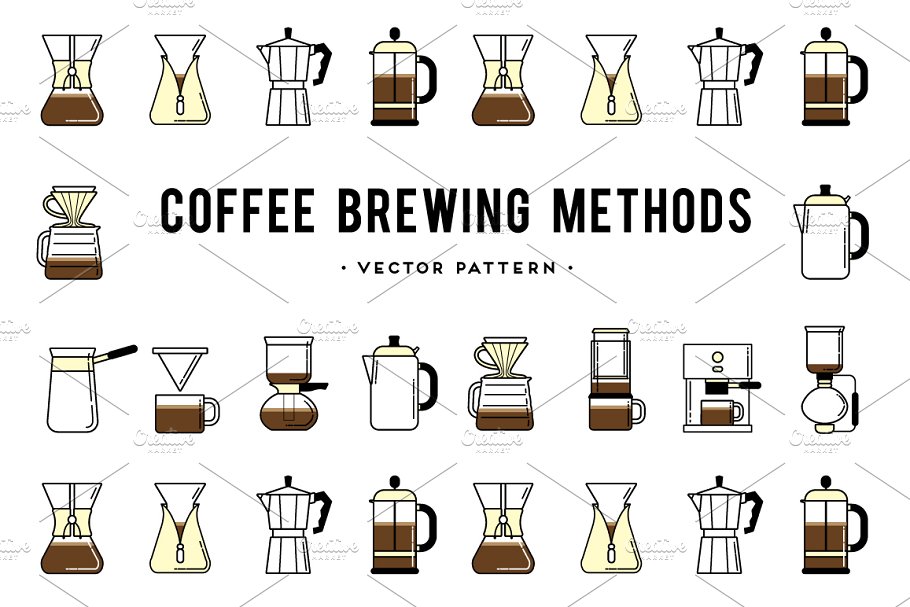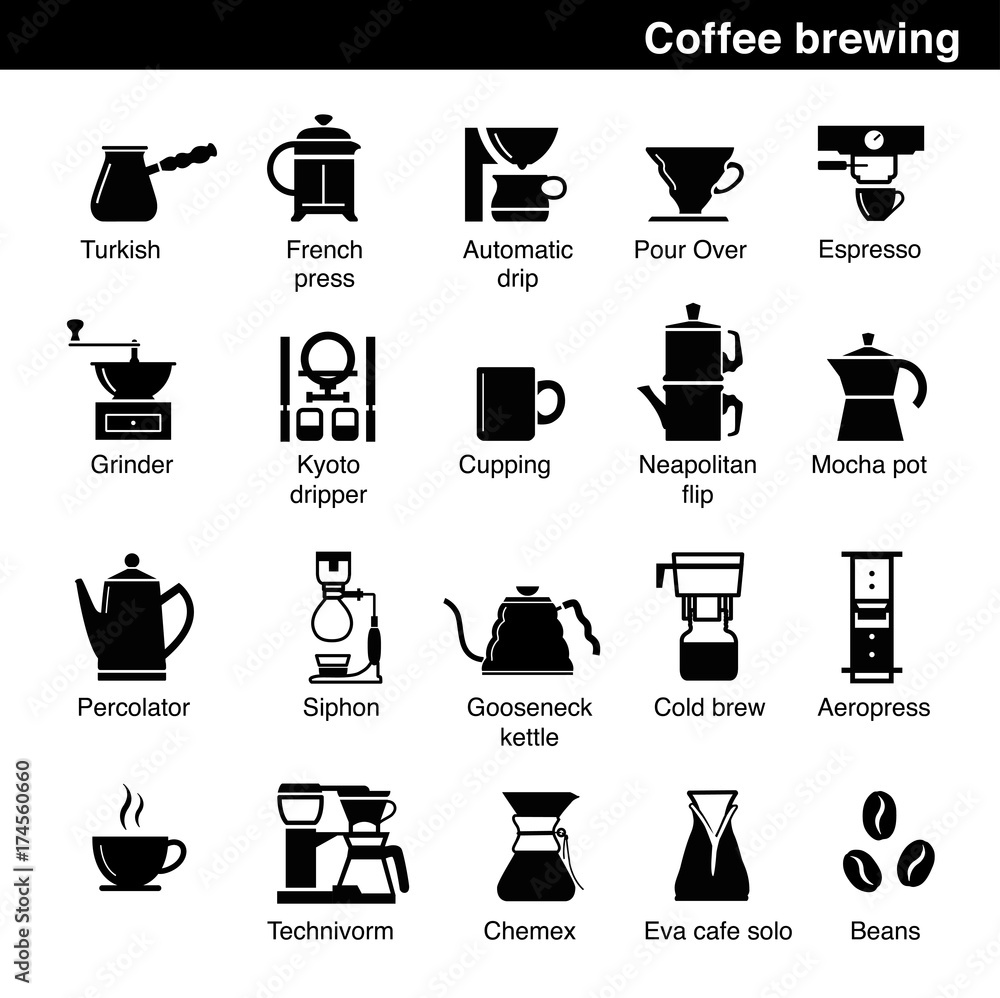The Influence of Various Coffee Brewing Methods on Flavor and Aroma
The Influence of Various Coffee Brewing Methods on Flavor and Aroma
Blog Article
The Scientific Research Behind Coffee Developing: Just How Temperature Level and Time Affect Your Drink
Recognizing the science behind coffee developing reveals that temperature and time are not plain variables but essential components that dictate the drink's taste profile and overall top quality. The optimal brewing temperature normally drops between 195 ° F and 205 ° F, while the period of extraction differs considerably across various approaches. This interaction of aspects can lead to a cup that is either wonderful or disappointing. As we discover the subtleties of these aspects, the question arises: how can one effectively equilibrium temperature level and time to accomplish that ideal brew?
The Chemistry of Coffee Extraction
The chemistry of coffee removal looks into the intricate processes that change raw coffee beans right into the aromatic beverage taken pleasure in worldwide. This improvement mainly entails the solubility of various compounds present in the beans, which are affected by variables such as work size, water top quality, and the developing approach utilized.
During the developing procedure, warm water functions as a solvent, removing soluble substances, consisting of high levels of caffeine, sugars, lipids, and acids, from the coffee grounds. Each substance adds to the flavor profile, aroma, and body of the final drink. As an example, acids are in charge of intense and zesty notes, while oils add to a rich mouthfeel.
The removal process is not consistent; different compounds dissolve at various rates. The first stages of developing remove acids and sugars, leading to a pleasant acidity, while prolonged extraction can bring about anger because of over-extraction of unwanted compounds. Understanding these chemical communications is critical for optimizing brewing strategies, as the balance between removal time and water temperature can dramatically influence the total quality of the coffee. Inevitably, grasping the chemistry of coffee extraction is crucial to achieving a flavorful and well-rounded cup.
Suitable Developing Temperatures
Finding the ideal developing temperature is necessary for unlocking the full capacity of coffee tastes and fragrances - coffee brewing methods. Research shows that the optimal array for brewing coffee exists between 195 ° F to 205 ° F(90 ° C to 96 ° C) Within this range, the removal procedure efficiently liquifies the preferable soluble substances in coffee beans, leading to a well balanced and savory cup
Developing at reduced temperature levels, such as listed below 195 ° F(90 ° C ), may result in under-extraction, generating a weak and acidic brew with soft flavors. On the other hand, brewing at temperatures exceeding 205 ° F(96 ° C) can lead to over-extraction, creating a bitter and severe taste as a result of the extreme dissolution of unwanted compounds, such as tannins.
Additionally, the optimal brewing temperature can vary depending upon the coffee bean type and roast degree. As an example, lighter roasts usually benefit from slightly greater temperatures to boost their complex flavor accounts, while darker roasts might be much better fit to reduced temperature levels to minimize resentment.
Eventually, maintaining precision in developing temperatures is essential for accomplishing a harmonious balance of flavors, making certain that every mug of coffee delivers a satisfying sensory experience.
Influence of Developing Time
Brewing time plays an essential function in determining the taste account and general top quality of coffee. Much shorter developing times can result in under-extraction, leading to a sour or weak taste, as not enough soluble substances are dissolved.
Optimum brewing why not find out more time differs relying on the technique used and the work dimension of the coffee. For example, a French press commonly requires about 4 mins, while coffee extraction is usually completed within 25 to 30 seconds. It is important to adjust developing time in combination with various other variables, such as water temperature and coffee-to-water ratio, to attain the desired taste profile.
Understanding the effect of brewing time enables coffee lovers to improve their developing methods, ultimately improving the sensory experience of their mug (coffee brewing methods). With cautious focus to this variable, one can unlock the complete possibility of the coffee, disclosing its special features and subtleties
Brewing Approaches and Their Effects

As an example, techniques like French press and cool mixture enable a longer steeping time, leading to a fuller body and durable taste as a result of raised removal of oils and soluble solids. On the other hand, espresso brewing uses high stress and a much shorter removal time, generating a focused shot that stresses extreme tastes and an abundant important link crema.
Pour-over strategies, such as Chemex or V60, supply an even more regulated removal procedure, permitting the maker to adjust circulation price and water circulation, which can enhance brightness and clarity. Percolation methods cycle water with the coffee premises multiple times, leading to a stronger, often bitter taste.
Last but not least, using paper filters versus steel filters can additionally influence the last preference; paper filters commonly produce a cleaner mug by capturing oils and fine bits, while metal filters permit more oils to go through, adding to a fuller mouthfeel - coffee brewing methods. Comprehending these subtleties can elevate the coffee experience substantially
Tips for Developing Your Mixture
A well-executed mixture can transform also the easiest coffee into an amazing experience. To achieve this, focus to detail is necessary. Begin with premium, freshly baked beans, as their flavor account reduces in time. Grind the beans right before brewing to optimize freshness, making certain the work size matches your developing method-- coarser for French press and finer for coffee.
Water high quality plays an essential duty; use filteringed system water totally free from contaminations. The optimal developing temperature varies in between 195 ° F and 205 ° F(90 ° C to 96 ° C ) Too warm can scorch the coffee, while as well amazing might under-extract flavors.
Timing is similarly important. For immersion techniques, soaking for 3 to five minutes is optimum, whereas drip methods normally take around five minutes. Trying out brew times to discover your recommended toughness.

Verdict
In summary, the intricate relationship between temperature level and time is extremely important in the coffee developing process. Understanding these scientific principles equips individuals to refine their developing strategies, inevitably leading to a more balanced and enjoyable coffee experience.
Understanding the scientific research behind coffee developing discloses that temperature and time are not mere variables but critical elements that dictate the drink's flavor account and total top quality. Understanding these chemical interactions is important for maximizing developing methods, as the balance between extraction time and water temperature level can significantly influence the total high quality of the coffee.Developing time plays an essential function in identifying the flavor account and overall high quality of coffee. By focusing on these aspects-- bean quality, grind dimension, water temperature, steeping time, and proportion-- you learn the facts here now can elevate your coffee brewing procedure, resulting in a constantly exceptional mug.
In recap, the complex connection in between temperature and time is vital in the coffee brewing process.
Report this page